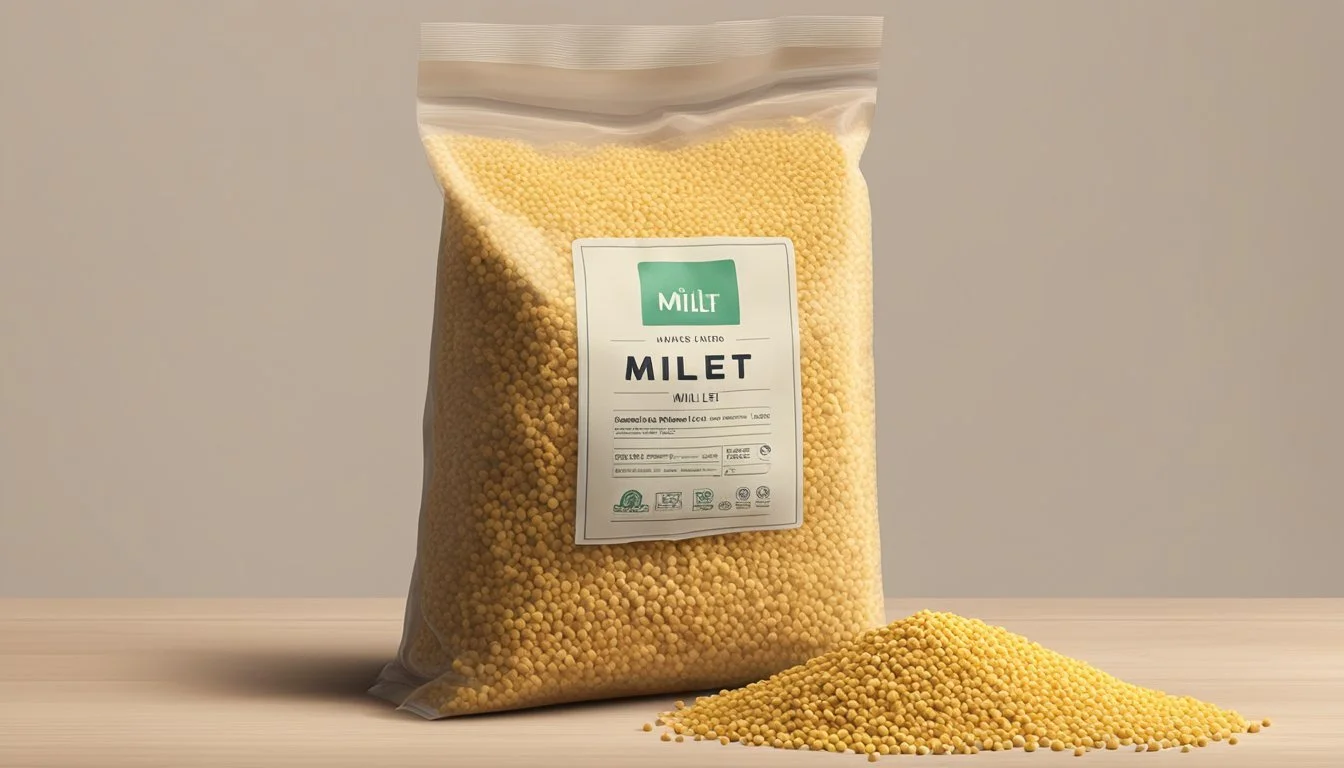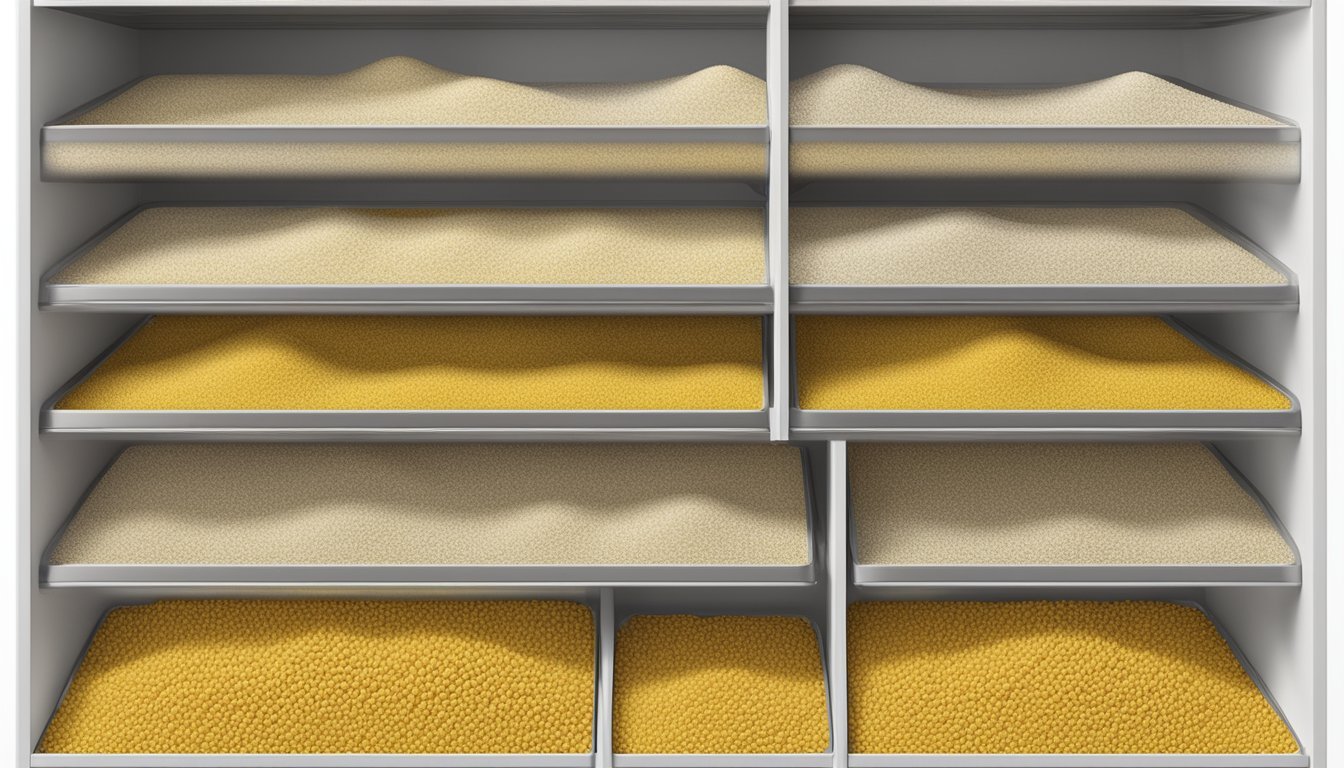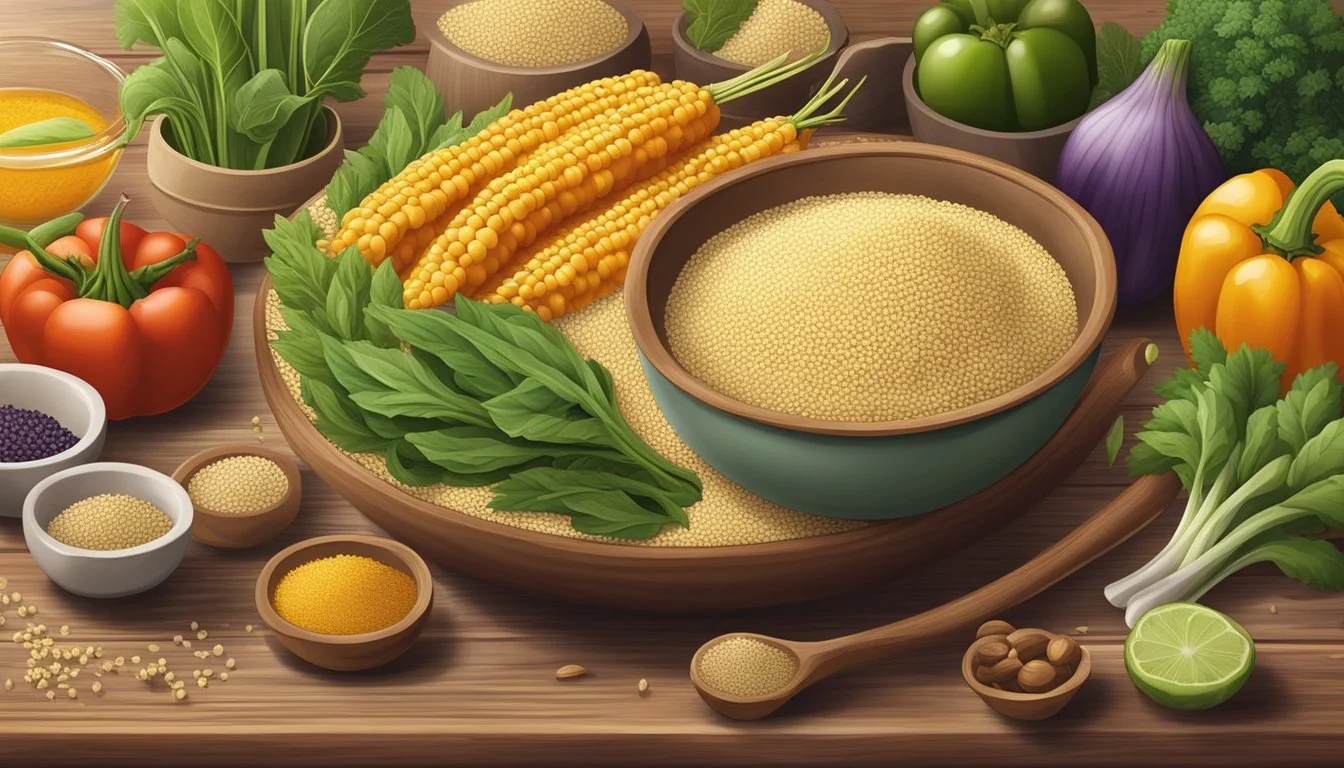How Long Does Millet Last?
Understanding Its Shelf Life and Storage Tips
Millet is a highly nutritious grain that is a staple in many diets around the world. Known for its versatility and shelf stability, millet can be a smart addition to any pantry. Understanding its lifespan is key for consumers looking to make the most of its nutritional value and flavor. The longevity of millet depends on various factors, including the form it's in—whether raw or cooked—and the conditions under which it is stored.
Raw millet, when kept in an airtight container and stored in a cool, dry area, can last for up to two years without significant degradation in quality. This grain’s sturdy nature makes it less susceptible to rancidity compared to oils and certain other whole grains, thereby providing considerable shelf life.
For those who have cooked millet, storage takes a different turn. Prepared millet should be refrigerated and is best consumed within about five days. When reheating, it's important to do so gently to prevent drying, ensuring that the millet retains its palatable texture and nutrient profile. Proper storage is essential to maintain millet’s wholesomeness, making it a reliable ingredient for a variety of dishes.
Understanding Millet
Millet is a highly nutritious, gluten-free grain that plays a significant role in the diets of millions of people around the world. It's a diverse grain with a variety of species each carrying unique qualities and culinary applications.
Nutritional Profile
Millet is celebrated for its nutritional benefits, which include a high protein content, essential minerals such as iron, magnesium, phosphorus, and potassium, and a rich supply of fiber and essential vitamins. Its gluten-free nature makes it a favorable choice for those with gluten sensitivities or celiac disease.
Varieties of Millet
There are several types of millet, each with its own characteristic properties:
Pearl millet (Pennisetum glaucum): Widely consumed around the globe, rich in magnesium and potassium.
Proso millet (Panicum miliaceum): Known for its short growing season, used in both human food products and bird seed.
Finger millet (how long does finger millet last?) (Eleusine coracana): Valued for its long storage properties and high calcium content.
These whole grains serve an array of functions in agriculture and cuisine, featuring heavily in traditional and contemporary recipes.
Millet in Cuisine
Millet's adaptability in cooking is notable. It can be transformed into a number of dishes including:
Porridge: A popular warming breakfast option.
Salad: Millet can be added to salads for extra texture and nutrients.
Soups: It serves as a thickening agent and adds a healthful boost.
Baked Goods: Millet flour (how long does millet flour last?) adds a nutty flavor to breads and cakes.
Breakfast Cereal: It can be used in its whole form to create a hearty cereal.
This vast versatility in recipes makes millet a global staple suitable for various dietary needs and culinary explorations.
Proper Storage of Millet
Proper storage is crucial for maintaining millet's freshness and extending its shelf life. A cool, dry place away from light and moisture ensures millet stays at peak quality.
Home Storage Solutions
For optimal longevity, millet should be stored in airtight containers such as glass jars or plastic sealing bags. These containers should then be placed in a pantry or cupboard at room temperature, shielding them from direct light which can degrade quality. In home storage, the goal is to reduce exposure to humidity, oxygen, and light—all of which can negatively affect millet.
Pantry or Cupboard: Ideal for unopened or sealed millet.
Glass Containers: Effectively keeps out oxygen and light.
Plastic Airtight Containers: Convenient for larger quantities.
Factors Affecting Millet Shelf Life
Several factors directly impact the shelf life of millet, including:
Storage Conditions: An environment with minimal light, low humidity, and stable temperatures is best.
Container Seal: Impermeable to oxygen, the seal's effectiveness can preserve millet's nutritional value and prevent spoilage.
Initial Quality: Prior to storage, ensure the millet is free from pests and any contaminants to increase the overall shelf life.
Factors Description Shelf Life Impact Humidity & Moisture High levels can lead to spoilage. Drastically reduces shelf life Temperature Cooler rooms extend shelf life. Higher temperature can lead to faster degradation Light Exposure Light accelerates nutrient loss. Decreases shelf life Oxygen Exposure Oxygen can degrade quality. Airtight containers are recommended
By focusing on these key elements, individuals can store millet effectively, preserving both its taste and nutritional quality.
Millet Preservation Methods
Preserving millet properly can significantly extend its shelf life, maintaining its quality and nutritional value. Different methods are suited to varying lengths of storage time and purposes. Here's how to keep millet fresh and usable.
Refrigeration Techniques
In the refrigerator, cooked millet can be kept fresh for up to five days. To refrigerate, one should place the millet in a clean, airtight container to protect it from the moisture and odors present in a fridge. This helps in retaining its texture and flavor.
Freezing for Longevity
Freezing millet, either cooked or uncooked, can prolong its longevity. For the best results, one should store the millet in freezer-safe bags or containers. Label and date the containers to keep track of the storage time. Frozen millet can last for several months without losing its quality.
Dry Storage Tips
Location: Store millet in a pantry, cupboard, or any location that is consistently cool and dark.
Containers: Place millet in airtight containers or food-grade bags to protect it from moisture and contaminants.
Check Regularly: Look for signs of moisture or insects as these are common issues in dry storage areas.
Protecting Against Contaminants
To safeguard millet from insects and moisture — the primary causes of degradation — one should use clean containers for storage. Adding oxygen absorbers can increase shelf life by removing the oxygen that pests and mold need to thrive. It is also essential to ensure the storage area is free from contaminants before placing millet there.
Shelf Life and Spoilage Indicators
Understanding the shelf life of millet and how to identify when it has gone bad are crucial for maintaining its quality and ensuring safety. The following information provides specific guidelines and indicators for both uncooked and cooked millet.
Freshness Periods for Millet
Uncooked Millet: Usually, uncooked millet's shelf life extends to approximately two years, provided it is kept in an airtight container in a cool, dry place away from direct sunlight or any heat source. This duration maintains the grain's freshness and nutritional quality.
Cooked Millet: Once cooked, millet should be consumed within five days if stored in the refrigerator at a consistent temperature. It is important to store cooked millet in a sealed container to avoid cross-contamination and moisture, which can accelerate spoilage.
Identifying Spoiled Millet
Signs of Spoiled Uncooked Millet:
Unpleasant Odor: A rancid or off smell is a clear indicator that the millet is no longer suitable for consumption.
Discoloration or Mold: Any visual changes such as mold growth or an unusual color change suggest that the millet has been compromised.
Indicators of Spoilage in Cooked Millet:
Texture Changes: Cooked millet that has become overly mushy or has a noticeable change in texture may have spoiled.
Odor: Like uncooked millet, an unusual or bad odor is a sign that cooked millet should not be consumed.
Whenever checking for spoilage, both the expiration date on the packaging and the mentioned physical signs should be taken into account to ensure the millet is safe to eat.
Consuming Cooked Millet
Cooked millet, known for its fluffy and tender texture, can be a versatile ingredient in various recipes. Its shelf life in the refrigerator typically spans about five days for optimal freshness.
Reheating Cooked Millet
To preserve its flavorful characteristics, it is essential to reheat cooked millet properly. One can reheat millet in the microwave or on the stove. In the microwave, spread the millet in an even layer on a dish, sprinkle a few tablespoons of water on it, and cover it before heating to retain moisture. On the stove, heat it in a saucepan with a dash of water or broth, stirring occasionally until it's thoroughly warmed.
Microwave Reheating:
Evenly spread millet on a dish
Sprinkle with water
Cover and heat
Stove Reheating:
Place in a saucepan
Add a small amount of water or broth
Stir occasionally until warm
Culinary Uses of Cooked Millet
Cooked millet can substitute for rice in a variety of dishes, expanding its culinary utilization to salads, soups, and as a base for stir-fries. Additionally, it can be included in baked goods for a nutritious twist. Millet, when stored correctly in either the refrigerator or freezer, maintains its texture and can be readily added to recipes even after reheating.
For Salads and Soups:
Use as a rice alternative
Combine with vegetables and dressing for salads
Add to soups for enhanced texture and nutrition
In Baked Goods:
Incorporate into bread, muffins, and other baked treats
Adjust recipes to account for millet's unique texture and absorption properties
Health and Safety Concerns
When it comes to millet storage, health and safety are paramount. Consumers must be aware of the risks of food poisoning and the importance of meeting dietary needs with proper storage techniques.
Gluten-Free Dietary Needs
Millet is a popular grain among those with gluten intolerance because it is naturally gluten-free. It is a safe alternative to gluten-containing grains and can be used in place of gluten-free flour for those with celiac disease or non-celiac gluten sensitivity. Storage of millet should prevent cross-contamination with gluten-containing products, which is a concern for those requiring a strict gluten-free diet. Proper storage includes sealing millet in airtight containers and dedicating a storage area away from gluten-containing foods.
Food Poisoning Prevention
To minimize the risk of food poisoning, millet should be stored properly. Uncooked millet can last up to two years if kept in an airtight container in a cool, dry place. Once cooked, it should be promptly refrigerated and is safe to eat for about five days. Storing in the refrigerator should be at a temperature below 40°F (4°C) to prevent the growth of foodborne bacteria. Millet should not be left at room temperature for more than two hours. Freezing cooked millet can extend its shelf life, but it must be sealed well to avoid freezer burn and moisture buildup. When thawing frozen millet, one should use the refrigerator, not room temperature, reducing the potential for bacterial growth.
Enhancing Millet-Based Dishes
Crafting millet-based dishes offers a rich tapestry of flavors and nutritional benefits. This section explores various ways to incorporate and enhance millet in cooking, focusing on flavor pairings, nutritional enhancement, and creative grain combinations.
Flavor Pairings
When preparing millet-based dishes, the key to unlocking its potential lies in understanding flavor pairings. Millet's subtle nuttiness pairs exceptionally with both sweet and savory ingredients:
Sweet Enhancements:
Honey: Drizzling honey over millet porridge can enhance its natural sweetness.
Milk and Sugar: Adding these to millet porridge for breakfast creates a comforting and traditional dish.
Savory Combinations:
Butter and Garlic: Sauteing cooked millet with butter and garlic gives it a rich flavor ideal for dinner sides.
Vegetable Oil and Herbs: For a lighter option, toss millet with quality vegetable oil and fresh herbs for a refreshing salad.
Enhancing Nutritional Value
Millet is inherently nutritious, offering a good source of fiber and essential vitamins. To further boost the nutritional profile of millet dishes, consider the following:
Protein: Combine millet with legumes or nuts to increase its protein content, making for a more balanced meal.
Fiber: Mix in vegetables like kale or spinach to enhance the fiber content, which can benefit digestive health.
Alternative Grains and Combinations
Millet can be easily combined with other grains to create a complex texture and to benefit from a wider range of nutritional benefits:
Quinoa and Amaranth: These ancient grains contribute complete proteins and a pleasing crunch.
Brown Rice and Barley: Introducing these grains can add depth with their chewy texture.
Corn and Oats: Adding these can create a harmony of flavors and additional fiber.
To prepare these combinations, a rice cooker can be an efficient tool, ensuring that the grains are cooked evenly without constant monitoring. Whether mixed with quinoa for a protein-packed salad or paired with brown rice to create a hearty side dish, millet's versatility makes it an excellent base for a multitude of recipes.
Comparison to Other Grains
When comparing millet to other grains, one must consider factors such as nutritional content, shelf life, sensitivity for certain diets, and cultural significance. Each grain brings a unique set of attributes to the table, affecting their use and popularity.
Millet vs Quinoa
Both millet and quinoa are gluten-free grains, making them popular among those with celiac disease or gluten intolerance. They can be used interchangeably in many recipes and are suitable for cooking in a rice cooker. Quinoa, however, is often perceived as a more protein-rich alternative with higher levels of fiber and iron. Millet, on the other hand, is prized in Indian cuisine for its versatility and nutrient content, including magnesium.
Millet and Wheat Sensitivities
Millet serves as a viable alternative to wheat for those with sensitivities, as it is naturally gluten-free. This characteristic makes millet a staple grain in gluten-free diets, contrasting with wheat that contains gluten which can trigger adverse reactions in people with celiac disease or non-celiac gluten sensitivity.
Nutritional Comparison
Grains like millet, quinoa, wheat, corn, oats, amaranth, and barley each contribute various nutrients to a diet. Here's how millet stands up nutritionally to some of these grains:
Grain Protein Fiber Iron Magnesium Millet Moderate High Good Excellent Quinoa High High High Good Wheat High Moderate Good Good Corn Low Low Low Moderate Oats High Very High Good Good Brown Rice Moderate Good Low Moderate Amaranth High High High High Barley Moderate High Good Good
Millet provides a well-balanced profile of protein and fiber and is notably high in magnesium.
Cultural Significance
Throughout India, millet maintains a considerable cultural importance; it's a staple food that's been cultivated and consumed for thousands of years. The cultural value of millet could be attributed to its resilience in arid climates and its integral role in traditional dishes. In comparison, quinoa holds a similar place in Andean culture while wheat has been a cornerstone in many Western diets.
Cost and Accessibility
Millet tends to be less costly than quinoa and is more accessible in regions such as India. It's a more economic grain in developing countries where it is grown locally, such as in parts of Africa and the Indian subcontinent. Grains like wheat and barley may be cheaper and more prevalent globally, but the rising demand for gluten-free options has bolstered the availability of millet and quinoa in mainstream markets.
Innovations in Millet Processing
In recent years, significant advancements in millet processing have enhanced millet's shelf life, positioning it as a competitive gluten-free option and improving its sustainability footprint. These developments impact storage conditions and the quality of both millet grain and flour.
Technological Advancements
Innovative methods such as Microwave (MW) technology have been increasingly applied to the processing of millets. Specifically, these approaches have been utilized for diverse purposes such as cooking, drying, and sterilization. This precision processing helps in not only preserving the nutrient content of millets but also in enhancing their biochemical and functional aspects. For example, increased power levels in MW treatment have been shown to raise the total phenolic content (TPC) in Kodo millet.
Improving Millet Shelf Life
The shelf life of millets is a key concern for both consumers and food industries. Advanced processing techniques, including novel thermal and non-thermal methods, aim to prolong the usability of millet by mitigating factors that cause spoilage. Effective processing can help maintain millet's nutritional profile while keeping it free from harmful microbial growth over an extended period.
Storage Conditions: Processing improvements have also led to better guidance on storage conditions, which are crucial in extending millet's shelf life. These guidelines include recommendations on temperature and humidity control to preserve millet in its optimal state.
Millet as Gluten-Free Option
As a naturally gluten-free grain, millet has gained popularity, particularly among consumers with gluten intolerance or celiac disease. Processing innovations have enabled the production of gluten-free flour with improved texture and baking qualities, making millet a versatile ingredient in gluten-free recipes.
Gluten-Free Flour: Furthermore, the adaptation of millets in the form of flour has received a boost through improved milling techniques that ensure the retention of nutrients while granting a fine consistency suitable for various gluten-free products.
Environmental Impact of Growing Millet
Millet requires relatively low water and can thrive in marginal soils, making it eco-friendly compared to water-intensive crops. Processing developments have further minimized the environmental footprint of millet by enhancing the efficiency of resource use throughout the production chain.
Sustainable Practices: Advanced processing technologies not only optimize nutrient retention but also contribute to sustainable practices by reducing waste and energy consumption during the millet processing.
Overall, the suite of innovations in millet processing brings this ancient grain to the forefront of modern agricultural practices, enhancing its appeal to a wide consumer base while promoting environmentally responsible food production.










